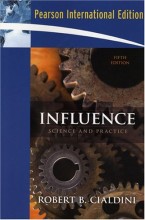Summary: Advanced Cn Sexuality Week 5
- This + 400k other summaries
- A unique study and practice tool
- Never study anything twice again
- Get the grades you hope for
- 100% sure, 100% understanding
Read the summary and the most important questions on Advanced CN sexuality week 5
-
1 Neurological control of human sexual behavior: Insights from lesion studies.
This is a preview. There are 3 more flashcards available for chapter 1
Show more cards here -
How is septal region thought to be involved in sexual behavior?
Subjective pleasurable response evoked by electrical stimulation of septal regions in all patients. Septal self-stimulation elicited orgasm and a compulsion to masturbate. Chemical stimulation of septal region elicited same response. Other study about two men have shunts placed in brain treating hydrocephalus. Shunt was placed in the septum. Shunt caused increase sexual activity -
How is hypothalamus thought to be involved in sexual behavior?
Lesions hypothalamus reduce or abolish sexual drive. Hypothalamus appears to mediate neuroendocrine and autonomic aspects of sexual drive with focal lesions leading to reduction sexual drive. Lesions including but not restricted to hypothalamus increase sexual drive. MRI revealed hypothalamus activation by sexual arousal: peak in activation at initial phase of erection therefore suggested hypothalamus may trigger overt sexual response -
How are the ansa lenticularis and pallidum thought to be involved in sexual behavior?
Ansa lenticularis are a bundle of myelinated fibres, interruption of this bundle effects sexual function. Fibres project from globus pallidus (basal ganglia) to thalamus
Four patients described with loss of libido following bilateral surgical lesioning of ansa lenticularis. Overall, findings suggest ansa leticularis and pallidum play role in mediation of sexual drive, lesions cause hypersexuality or alibido -
How is frontal lobe associated with sexual behavior?
Disinhibited behavior reported following damage frontal lobes. Frontal lobes mediate motor components sexual behavior and control sexual response that may be disinhibited after frontal lobe damage in context of general behavioral disinhibition. OFC activation when representing pleasant bodily sensations. Dorsal ACC activation attributed to skeletomotor activities characterizing sexual arousal and perceived urge to act. Peaks during initial phase of erection and maintained activation during erection -
How is the parietal lobe associated with sexual behavior
Sexual seizures arising from parietal cortex may involve heightened sexual arousal or sensations in genitalia or erogenous areas: individual conscious and alert during episodes and recognizes sexual nature without finding them pleasurable or erotic but rather irritating, painful and frightening. Medial surface parietal lobe involved in mediation genital sensations -
How is the temporal lobe involved in sexual behavior
hypersexuality following bilateral temporal lobectomy. Paraphilias and sexual orientation associated with temporal lobe dysfunction. Alteration sexual behavior reported in patients with epilepsy (temporal lobe) à mostly hyposexuality. Removal of epileptogenic tissue temporal lobe is reported to abolish pre-existing sexual paraphilias, decline libido, restore normal sexual functioning, or sometimes causes hypersexuality. Sexual change more evident when surgery comprised temporal lobe compared to extratemporal lobe -
What are the characteristics of Kluver Bucy syndrome
(1) visual agnosia (not recognizing objects)
(2) Hyperrorality (tendency to examine object by mouth)
(3) hypermetamorphosis (irresistible impulse react and attent to visual stimuli)
(4) emotional changes (absence fear or expressing anger) (5) changes in dietary habits
(6) hypersexuality. -
Describe the Kaplan triphasic model of sexual behavior and its associated regions in brain.
thriphasic model (1) sexual desire (2) excitement (3) orgasm
1) mediated by subcortical structures: hypothalamus, ansa lenticularis, pallidum also temporal lobes (amygdalae)
(2) cortical structures such as: parietal and frontal lobe controlling genital sensation and motor aspects of sexual response (sexual acitivity)
(3) septal region. There seems to be an interconnected neural network where brain regions and phases are simultaneously activated producing physical and psychological human sexuality -
2 Challenges associated with the definition and assessment of inappropriate sexual behaviour amongst individuals with an acquired neurological impairment
This is a preview. There are 4 more flashcards available for chapter 2
Show more cards here -
There is an inconsistency in definition of inappropriate sexual behavior. What is the key issue in defining inappropriate sexual behavior
Subjective interpretation of it and its context. -
What are potential reasons for ISB to be less observed than other behavioral symptoms? Name 2.
1. Lack of formal framework
2. Discomfort reporting
- Higher grades + faster learning
- Never study anything twice
- 100% sure, 100% understanding































